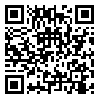BibTeX | RIS | EndNote | Medlars | ProCite | Reference Manager | RefWorks
Send citation to:
URL: http://jdisabilstud.org/article-1-2619-en.html
2- Assistant Professor, Department of Family Counseling, Sanandaj Branch, Islamic Azad University, Sanandaj, Iran
3- Associate Professor, Psychiatry Department, University of Medical Sciences, Kosar Hospital, Psychiatric Ward, Sanandaj, Iran
Abstract
Background & Objectives: Dissatisfaction with sex can lead to serious relationship problems. As marital commitment increases, spouses' lives become more flexible, and couples have more peace and mental health. Intimacy is one of the basic needs in a couple’s relationship, and at the same time, it brings happiness to every spouse. For the first time, Wincze et al. introduced evidence–based comprehensive treatment approach called sexual problem–solving therapy. The Islamic approach to this treatment method seeks to create a positive attitude about sexual behavior, a sense of satisfaction, pleasure, physical, and psychological vitality more than the relationship between husband and wife. The strengthening of this attitude prevents many sexual problems in couples. So, this study aimed to examine the effectiveness and durability of problem–oriented couple therapy based on an Islamic approach to sexual issues, marital intimacy, and marital commitment in couples referring to counseling centers in Sanandaj City, Iran.
Methods: The present research method was quasi–experimental with a pretest–posttest and a 3–month follow–up design with a control group. The statistical population included couples referring to Sanandaj counseling centers from September 2018 to September 2019. Among them, 32 volunteered men and women were included in the study by purposive sampling. After homogenization based on demographic variables, they were randomly divided into experimental and control groups (each consisting of 16 couples). The sample size was estimated based on previous studies and considering the maximum standard deviation of 10, α=0.05, and 95% test power. The inclusion criteria were as follows: couples who did not suffer from chronic psycho–personality disorders and did not participate in psychological and psychiatric interventions simultaneously, had lived together for at least one year, missed more than two sessions in treatment sessions, and experienced stress. Major events due to unforeseen events, such as the death of a first–degree relative or divorce, were also considered as criteria for excluding participants from the study. Assessment tools included Multidimensional Sexuality Questionnaire (Snell et al., 1993), Marital Commitment Questionnaire (Adams & Jones, 1997), and Marital Intimacy Questionnaire (Thompson & Walker, 1983). The sexual problem–solving couple therapy protocol based on the Islamic approach was performed by a trained instructor for the experimental group, but the control group did not receive training in this area. This Islamic approach was administered in eight 90–minute sessions once a week for two months based on the training package of Ahmadian et al. (2018). To describe the data, tables, central indices, and dispersion indices such as mean and standard deviation were calculated. The variance analysis method with repeated measurement and Bonferroni post hoc test were employed for data analysis using SPSS version 22 software. The significance level of the tests was considered 0.05.
Results: According to the significance of the group effect, the results indicated that the trend of the average score changes from pretest to posttest and follow–up in the experimental group was significantly different from the control group (p<0.05). Regarding the variables of sexual issues, marital intimacy, and marital commitment, the differences between the pretest and posttest stages (p<0.001) and between the pretest and follow–up stages (p<0.001) were significant. Also, the effectiveness of the intervention in the follow–up phase was permanent for the variables of sexual issues (p=0.560) and marital intimacy (p=0.018). Still, for the marital commitment variable, it did not last (p<0.001).
Conclusion: Based on the study finding, sexual problem–oriented couple therapy based on an Islamic approach is effective in improving sexual issues, marital intimacy, and marital commitment in couples, and this effectiveness in sexual issues and marital intimacy is permanent (after three months).
| Rights and permissions | |
 |
This work is licensed under a Creative Commons Attribution-NonCommercial 4.0 International License. |



